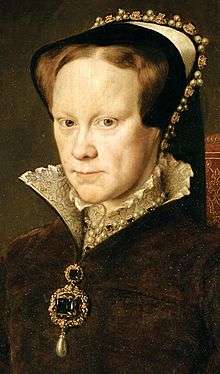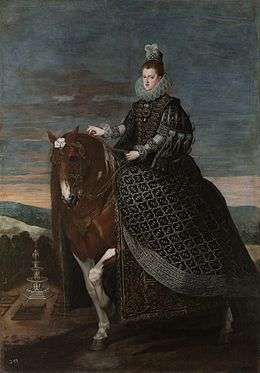Pearl of Kuwait

The Pearl of Kuwait is a pearl that was bought in 2004 by its current owners, Bond Street, London jewellers Symbolic & Chase, and named the Pearl of Kuwait in recognition of the Persian Gulf waters in which many pearls have been found. It measures 258.12 grains (64.5 carats, 69.8 carats with its diamond cap) making it the third-largest (documented) well-formed natural pearl drop.
Pearls of this type have been owned by royal families or important members of the aristocracy. This was mentioned in the comments by Christie's auction house in the original auction catalogue entry:
"Unfortunately the provenance of this great pearl has been lost in the passage of time. However from its sheer size and beauty it is hard to imagine that it was not at some point one of the principal pearls in a royal collection… Comparatively few unrecorded pearls will weigh more than 200 grains, especially a well formed drop of good colour and fine skin, which must be considered one of nature’s rarest creations."[1]
History
The pearl is claimed to be the one that was worn by Mary Tudor, however the famous La Peregrina pearl (which weighs 204 grains) has a much longer provenance and has this claim well-established.
Isabella of Portugal was the first documented owner of a large pearl which went on to be owned by Mary I of England. While the acquisition date remains undocumented, the pearl is included in the detailed inventories of Isabella's possessions collated after her death in 1539, where it can be identified by weight. The pearl is cited in the inventories of 1539–1542.[2]
"...una perla grande de pera pinjante engastada con dos rrosicas esmaltadas de blanco y rrusicler y con una argollica ençima de que se cuelga que pesa como esta con el oro tres ochavas y çinquenta y tres granos esta sola por si tasada en quinjentos ducados"

Translation:
A large pear-shaped pendent pearl with a cap enameled pink and white in the shape of two roses with a small gold loop on top [from which it can be attached to a jewel or chain] which weighed as it was three-eighths and fifty-three grains, and is alone, valued at five hundred ducats.
Philip II of Spain borrowed the pearl from his mother's collection for his wedding to Maria Manuela of Portugal in 1543. She died in 1545 during childbirth and the pearl is included in her post mortem inventory. It was then returned to Isabella.[3]
In the Portrait of Isabella of Portugal, a large pearl is mounted in a completely different jewel setting for the Empress. However, the portrait was painted posthumously by Titian in 1548 based on an earlier portrait by an unknown painter. The unknown painter's portrait was destroyed in a fire in 1604.

Joanna of Austria inherited Isabella's pearl in 1551 in accordance with her father Charles V's division of Empress Isabella's estate. Philip II of Spain may have acquired the pearl from his sister Joanna upon her return from Portugal in May 1554.
Philip II received a pearl in 1558 upon the death of his wife as per her testament of 1557, where Mary I requested that the Grande jewel, and other jewels she had been given by Philip II and Charles V, be kept by him in memory of her. The pearl was unsold in the auction and in 1581 a silversmith named Diego Ruiz purchased a pearl for 3,300 Spanish reales.
As per Philip II's testament, La Peregrina pearl officially became part of the Spanish Crown Jewels in 1598, when it was paired with the Estanque diamond. The Estanque diamond was a large table-cut diamond that Philip II gave his third wife, Elisabeth of Valois, in 1560. At the time it was considered the largest, most perfect diamond in Europe. It was paired with the Peregrina pearl and prominently worn by Spanish Royals until its theft by Joseph Bonaparte in 1813. The design of the Estanque jewel, comprising a large pearl pendant suspended from a large table-cut diamond, has also added to the confusion due to its resemblance to the Habsburg creation. When Christie's auctioned Elizabeth Taylor's collection of jewellery on 15 December 2011 in New York, La Peregrina included. La Peregrina is claimed to be the Mary Tudor pearl.
In 2004, a large pearl named the Pearl of Kuwait was consigned by an undisclosed private family for auction at Christie's in London. The Pearl of Kuwait was part of the Pearls exhibition at the Victoria & Albert Museum in London, which closed on 19 January 2014.[4] The Pearl of Kuwait outweighs La Peregrina by a small amount, and its owners have made unsubstantiated claims that it is the Mary Tudor pearl.
References
- ↑ Important Jewellery, 24th November 2004. London: Christie's. p. 132, Lot 255.
- ↑ Los Inventarios de Carlos V y la familia imperial, vol.2. Madrid. 2010. p. 1487. ISBN 978-84-937083-13.
- ↑ The Post Mortem Inventory of Princess Maria of Portugal, 1545, Archivo General de Simancas, Valldolid
- ↑ Pearls, Beatriz Chadour-Sampson with Hubert Bari, V&A publishing. P72-73. ISBN 978-1-85177-755-6
